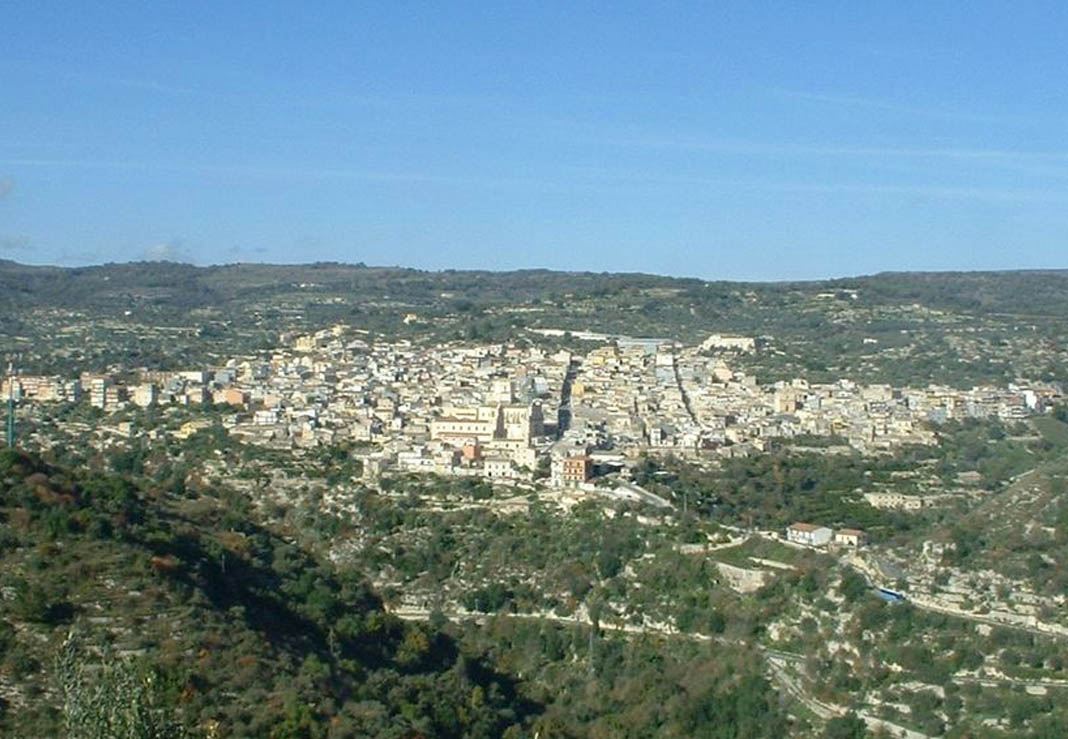
In the circuit of the most beautiful villages in Italy there is a small pearl of the Val di Noto, which among the villages of Syracuse is represented by Ferla, a town of medieval origins, today populated by about 2.000 people.
The heart of the country, said Old Prisons, is squeezed into the ancient belt of medieval buildings, where the ruins of antiquity have been transformed into vegetable gardens; all around, the green pastures, but also expanses of olive, carob and almond trees frame the village of Ferla.
Before arriving in the village, therefore, you cross fields cultivated with wheat and meet animals grazing peacefully in the greenery, but these are not the only protagonists of the panorama that surrounds Ferla: here the real protagonist is still the story, the one that precedes the city, when betweenBronze Age andIron Age, the area was populated by sheltered human settlements in the hills around Ferla. Even today it is possible to admire the traces of their settlements, of the necropolis and of the great Palazzo del Principe.
Whoever passes hills, fields and walls, arrives in the center of Ferrara, where is the Via Sacra, the beating heart of the country's religious life. The local religious community, in fact, meets in Via Vittorio Emanuele where are five sacred buildings of Catholic worship, where people gather to pray, but which are also a destination for interesting tourist visits.
Via Vittorio Emanuele, the sacred way of Ferla
From north to south, Via Vittorio Emanuele cuts the small village of Ferla in two and houses some beautiful religious buildings right in the heart of the village. Coming from the North, the first Church found on the Via Sacra is the Church of Sant'Antonio Abate, example of Iblean Baroque style. Continuing, they meet the Church of Carmine with its tower facade, the Church of San Sebastiano symbolic place of the Patron Saint and the Mother Church of San Giacomo, to then arrive at the Church of Santa Maria, a former convent that was also a prison.
La Church of Sant'Antonio Abate it is a majestic two-order building, characterized by a facade with three concave bodies, on which the decorations sculpted with abundant care in the mid-eighteenth century stand out. Inside the church it is possible to admire The Triumph of Saint Anthony in the Four Continents of the Earth, pictorial work by Joseph Crestadoro, together with numerous stucco sculptures.
The Carmine Church has a simpler structure, decorated with elements of Ionic and Doric style. Entering you find yourself in the single nave of the Church, overlooked by the altars of the SS. Crucifix and the SS. Redeemer, as well as those dedicated to the Archangel Raphael and to St. Paul the Apostle. On the main altar, instead, scenes taken from the Bible are represented.
Continuing we arrive at Church of San Sebastiano: the construction, which began in the fifteenth century, ended only in the eighteenth century, which is why its beautiful facade today is in Baroque style. Renovated in the seventies of the twentieth century, it houses the relics of the Patron Saint, as well as works of considerable artistic value such as the Martyrdom of San Sebastiano del Crestadoro and Fercolo del Santo.
La Mother Church of Ferla is dedicated to St. James and is a stately eclectic building; the diversity of styles is due to the earthquakes in the town, which made it necessary to renovate the building from time to time. Built on the ashes of a Renaissance church, it was never completed, but rather partially damaged by the earthquake of 1848. Despite this, the church appears today as a powerful and solid building.
The Church of Santa Maria is one of the oldest buildings in the town with the central body flanked by the bell tower. In addition to being a convent, this building was also a prison and a church. Inside you can admire a beautiful seventeenth-century wooden crucifix and the statue of Santa Maria La Bianca.
Beyond the Via sacra, what to do around Ferla
All the beautiful churches of Ferla can be the destination of a tour in search of the architectural beauties of the country, but among the villages of Syracuse, those who also want to discover the other attractions in the area can reach the archaeological site of Pantalica, and then continue to Syracuse.
La necropolis of Pantalica it is located about 11 km from Ferla and is a large archaeological site that winds around the hill, also occupying the caves on the hill itself.
The caves dug into the rock are also visible from the ground, while the Byzantine village of S. Micidario can be reached by following an open path that leads up to the site's Rock Church, where fragments of the ancient and rich Byzantine decorations are still visible. The ruins of the Prince's Palace, the Anaktoron built with megalithic stone blocks, are still visible.
Among the villages of Syracuse there is Buccheri, on the Mount Lauro, where you can admire the remains of the Castle and the Church of Santa Maria Maddalena, as well as numerous other ruins of sacred buildings inside and outside the village.
The tour can go as far as Syracuse, where in addition to being able to visit some of the most beautiful monuments in Sicily, such as the Cathedral or the Temple of Apollo, you can also find excellent restaurants to taste the local cuisine.
Among the dishes to be absolutely tasted when you reach Ferla or Syracuse, in addition to cannoli and brioche, there are vermicelli alla siracusana, orange salad and sweet and sour pumpkin, a typical dish of Ferla.
How to reach Ferla and cross the Via Sacra
In the southeastern area of the island, Ferla is one of the villages of Syracuse that are easy to reach by car or by train: by car, through the Highway 124 in the direction of Palazzolo, you arrive in Ferla by turning towards the village at the Montegrosso crossroads.
Those traveling by train can get off at Ragusa station and continue by bus or shuttle for a journey of about 29 km.









